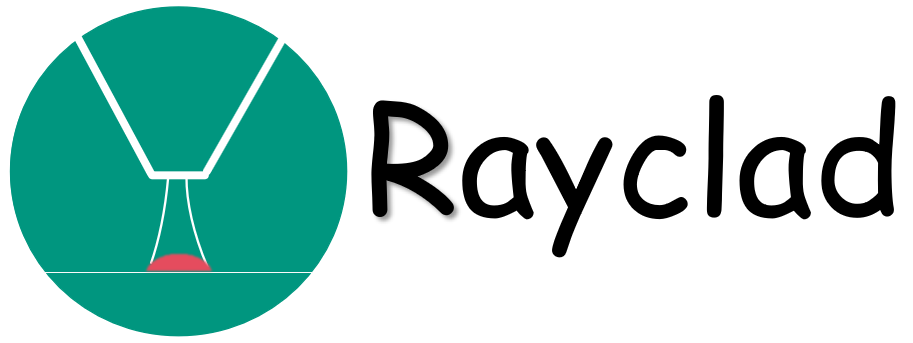After the laser cladding process, various machining approaches may be employed to achieve the final desired dimensions, surface finish, and overall part geometry. The specific machining steps depend on the application, the characteristics of the laser-clad layer, and the overall requirements of the final product. Here are some common machining approaches following laser cladding:
1. Milling:
Milling is a common machining process that involves removing material using rotary cutters. It can be employed to achieve precise dimensions, flatten surfaces, or create specific features on the laser-clad component.
2. Grinding:
Grinding is a precision machining process that uses abrasive particles to remove material from the surface. It can be used to improve surface finish, achieve tight tolerances, and eliminate any irregularities left by the laser cladding process.
3. Turning:
Turning is a machining operation that rotates a workpiece on a lathe, and a cutting tool is applied to remove material. It is often used for achieving cylindrical or conical shapes and for creating features such as grooves or threads.
4. Drilling:
Drilling involves creating holes in the material. Following laser cladding, drilling may be necessary to produce holes with accurate dimensions for assembly or other functional purposes.
5. Electro-Discharge Machining (EDM):
EDM is a non-traditional machining process that uses electrical discharges to remove material. It can be employed for intricate shapes, especially in cases where the laser-clad layer is hard and difficult to machine conventionally.
6. Abrasive Water Jet Machining:
Water jet machining uses a high-pressure jet of water mixed with abrasive particles to remove material. It is suitable for cutting, shaping, and finishing laser-clad components.
7. Ultrasonic Machining:
Ultrasonic machining uses ultrasonic vibrations and abrasive particles to remove material. It is suitable for precise machining of hard and brittle materials, which might be encountered in laser-clad layers.
8. Chemical Machining:
Chemical machining involves using chemicals to selectively remove material. It can be employed for specific applications where conventional machining methods are impractical or challenging.
9. Laser Machining:
Laser machining can be applied for additional precision or to perform specific tasks such as engraving or cutting. Laser machining may complement laser cladding, especially in applications where intricate features are required.
The choice of the machining approach depends on factors such as the material properties of the laser-clad layer, the required surface finish, dimensional accuracy, and the complexity of the final part. Additionally, the machining steps are often planned based on the specific tolerances and geometric features needed for the end-use application. Collaborating with machining experts and considering the specific requirements of your project will help determine the most effective and efficient post-laser cladding machining strategy.
What are the difficulties in machining after laser cladding?
Machining after laser cladding can present several challenges due to the unique characteristics of the laser-clad layer. Here are some difficulties commonly encountered in machining after laser cladding:
- Hardness Variation:
- Laser-clad layers often exhibit increased hardness compared to the substrate material. This hardness variation can lead to accelerated tool wear and may require the use of specialized cutting tools with higher hardness or wear resistance.
- Residual Stresses:
- The rapid heating and cooling cycles during laser cladding can induce residual stresses in the material. Machining through a stressed layer can cause warping or distortion, affecting dimensional accuracy. Proper stress relief techniques or machining strategies may be necessary to mitigate these effects.
- Material Anisotropy:
- Laser-clad layers may exhibit anisotropic material properties due to the directional nature of the laser cladding process. This can result in varying material responses to machining forces, affecting tool performance and surface finish.
- Surface Roughness:
- The surface of the laser-clad layer may have irregularities, such as surface nodules or partially melted particles. Achieving the desired surface finish through machining may require additional passes or the use of specialized tooling.
- Presence of Hard Particles:
- In some cases, the laser-clad layer may contain hard particles or unmelted powder particles. These particles can be abrasive and contribute to tool wear during machining.
- Complex Geometries:
- Laser cladding allows for the creation of complex and intricate geometries. However, machining these complex shapes may be challenging, requiring specialized tooling or multi-axis machining capabilities.
- Tool Wear and Tool Life:
- The increased hardness of the laser-clad layer can result in accelerated tool wear, reducing tool life. This may necessitate frequent tool changes and increase machining costs.
- Heat Generation:
- Machining through a hard and heat-affected laser-clad layer can generate additional heat, potentially leading to thermal issues such as tool overheating and reduced machining efficiency.
- Material Compatibility:
- Some laser-clad materials may not be readily machinable using conventional methods. The choice of machining strategy and tools should be carefully considered based on the material composition.
- Dimensional Control:
- Achieving precise dimensional control can be challenging, especially when machining through a hard or inhomogeneous laser-clad layer. Maintaining tight tolerances may require careful planning and monitoring.

To address these difficulties, it’s crucial to employ appropriate machining strategies, tooling, and cutting parameters. Some potential solutions include the use of specialized tool coatings, tool materials designed for hard machining, and optimizing cutting speeds and feeds. Additionally, post-processing steps such as grinding or finishing operations may be employed to achieve the desired surface quality and dimensional accuracy. Collaboration between laser cladding and machining experts can help develop effective strategies for overcoming these challenges based on the specific characteristics of the laser-clad material and the requirements of the final component.
How to check the mechanical processing after cladding?
Checking the mechanical properties of a material after laser cladding involves performing various tests to assess characteristics such as hardness, tensile strength, microstructure, and other relevant properties. Here are some common methods used to check the mechanical processing after cladding:

- Hardness Testing:
- Brinell, Rockwell, or Vickers Hardness Tests: These tests measure the resistance of a material to indentation. Hardness testing provides an indication of the material’s hardness, which is often important for wear resistance in applications like cladding.
- Tensile Testing:
- Tensile Strength Test: Tensile testing involves subjecting a sample to axial tensile forces to measure its mechanical properties, including yield strength, ultimate tensile strength, and elongation. This test is crucial for understanding the material’s strength and ductility.
- Microstructural Analysis:
- Metallographic Examination: Microstructural analysis involves studying the internal structure of the material under a microscope. This can reveal information about the grain structure, phase distribution, and any potential defects in the laser-clad layer.
- Impact Testing:
- Charpy or Izod Impact Test: Impact tests assess a material’s resistance to sudden loading. This is particularly important in applications where the material may experience impact or shock loading. The test measures the energy absorbed during fracture.
- Fatigue Testing:
- Fatigue Testing: Fatigue testing assesses the material’s resistance to cyclic loading. This is crucial for applications where components experience repeated loading and unloading cycles.
- Non-Destructive Testing (NDT):
- Ultrasonic Testing (UT), Radiographic Testing (RT), or Magnetic Particle Inspection (MPI): NDT techniques can be employed to detect internal defects or discontinuities in the laser-clad layer without damaging the material.
- Surface Roughness Measurement:
- Surface Profilometry: Measuring the surface roughness provides information about the quality of the laser-clad surface. This is important for applications where a smooth surface is critical.
- Residual Stress Measurement:
- X-ray Diffraction (XRD) or Hole Drilling Method: Residual stresses induced during laser cladding can be assessed using these methods. Understanding residual stresses is crucial for predicting material behavior in service.
- Chemical Composition Analysis:
- X-ray Fluorescence (XRF) or Optical Emission Spectroscopy (OES): Analyzing the chemical composition of the laser-clad layer ensures that it meets the specified requirements and helps identify any potential issues with material homogeneity.
- Fracture Surface Analysis:
- Scanning Electron Microscopy (SEM): Examining the fracture surface of a sample can provide insights into the failure mechanism and the behavior of the material under stress.
It’s essential to follow relevant industry standards and specifications when conducting mechanical testing after laser cladding. The choice of tests will depend on the specific properties required for the intended application. Additionally, collaborating with materials testing laboratories or experts in the field can ensure accurate and comprehensive evaluation of the laser-clad material.


